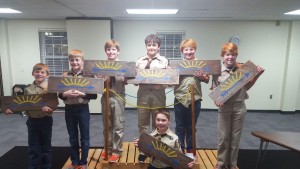Litter & Water Palliation
By: Dylan Murray
Did you that if you change from bottled water to tap water, you could increase the amount of oil used to help cars run. Or did you know that there is an artist that uses litter on the beach to make sculptures of marine animals? Both passages “Drinking Water: Bottled or from the Tap?”by Catherine Clarke Fox and “Art for Ocean Animals” by Elise Jonas-Delson talk about litter and pollution similarly and differently. They both talk about how palliation can effect other lives, and how litter can be used and how palliation can decrease if we lend a helping hand. In my essay, I will go in depth and discuss the similarities and differences of these two articles. First of all, let’s start with some similarities.
In both stories “Drinking Water: Bottled or from the Tap?” and “Art for Ocean Animals” the authors talk about how litter and palliation can change our environment. For example, in the article “Drinking Water: Bottled or from the Tap?”, the author states that, “All those plastic bottles use a lot of fossil fuels and pollute the environment. In fact, Americans buy more bottled water than any other nation in the world, adding 29 billion water bottles a year to the problem. In order to make all these bottles, manufacturers use 17 million barrels of crude oil. That’s enough oil to keep a million cars going for twelve months.Imagine a water bottle filled a quarter of the way up with oil. That’s about how much oil was needed to produce the bottle.” In the article “Art for Ocean Animals” the author similarly proclaims that, “Pozzi started Washed Ashore when she noticed plastics on the beaches in Oregon, where she lives. Plastic doesn’t break down and become absorbed by the environment. Instead, sunlight breaks it down into pieces about the size of plankton, which are tiny organisms that float in the sea. These tiny pieces of plastic enter the food chain. Sea animals eat them and end up dying. Pozzi always loved the ocean and the animals in it, and she wanted to do something to help both. Also they both show ways we can help decrees the amount of litter and palliation. For ins tense, in the article “Drinking Water: Bottled or from the Tap?”, the the author shows a way we can help by saying “If they realized the problems it causes, they would try drinking from a glass at home or carrying water in a refillable steel container instead of plastic. Plastic bottle recycling can help—instead of going out with the trash, plastic bottles can be turned into items like carpeting or cozy fleece clothing.” In the passage“Art for Ocean Animals”, the author talks about an artist named Angela Hazleton Pozzi who uses trash and litter to make sculptures of marine animals. This is how they are similar, but they also differ from each other to.
The two articles are different in many ways. For example, the article “Drinking Water: Bottled or from the Tap?” the author tells how bottled water can decrease the amount of oil that could be used for cars and the material used tho make the bottle can be used to make clothing and carpeting, while in the article Art for Ocean Animals” talks about an artist who uses trash on the beach to make sculptures of marine animals. Also, in “Drinking Water: Bottled or from the Tap?” the passage isn’t referring to anyone, it’s just encouraging everyone to help decrease palliation while in the story Art for Ocean Animals” it is using someone to encourage you to help.
From these two passages, I’ve learned that it is good to reuse, reduce, and recycle. I also learned that I should drink tap water to. After reading my essay, you can see that there many similarities and differences. Those are the reasons that they similarly talk about litter and palliation, and differently.
